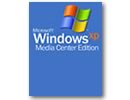'ZDNET Recommends': What exactly does it mean?
ZDNET's recommendations are based on many hours of testing, research, and comparison shopping. We gather data from the best available sources, including vendor and retailer listings as well as other relevant and independent reviews sites. And we pore over customer reviews to find out what matters to real people who already own and use the products and services we’re assessing.
When you click through from our site to a retailer and buy a product or service, we may earn affiliate commissions. This helps support our work, but does not affect what we cover or how, and it does not affect the price you pay. Neither ZDNET nor the author are compensated for these independent reviews. Indeed, we follow strict guidelines that ensure our editorial content is never influenced by advertisers.
ZDNET's editorial team writes on behalf of you, our reader. Our goal is to deliver the most accurate information and the most knowledgeable advice possible in order to help you make smarter buying decisions on tech gear and a wide array of products and services. Our editors thoroughly review and fact-check every article to ensure that our content meets the highest standards. If we have made an error or published misleading information, we will correct or clarify the article. If you see inaccuracies in our content, please report the mistake via this form.
Windows XP Media Center Edition


Microsoft Windows XP Media Center Edition
pros and cons
- Supports operation via remote control easy to use built-in personal video recorder lets you save TV programmes to your hard drive.
- Only available preinstalled on a system inconsistent interface doesn't add much new capability to Windows.
Unless you're planning to buy a new PC, don't consider Microsoft’s Windows XP Media Center Edition – launched last October in the US and due this autumn in Europe -- just yet. This build of Windows XP Professional, which delivers remote-controlled audio, video, live TV and the ability to record live TV to the PC, will be found only preinstalled on select PCs -- at least, for the moment. You'll love Media Center if you need one of these new all-in-one PCs for your tiny student flat, say, but Microsoft needs to work out a few rough edges before this edition is good for everyone.
In practice, Media Center Edition (MCE) lets you use an infrared remote control to play TV, music, DVDs, and photo slide shows on your PC. Technically, the OS augmentations include just a set of application controls and interface elements built on the core of Windows XP Professional, with simpler navigation conventions and -- more important -- the potential for your PC to use networking features such as Remote Desktop Protocol (RDP) to distribute music and video to other systems in your home and to handheld devices.
As first-generation software, MCE delivers about what you'd expect: it adds no new capabilities to Windows, just a different way of accessing the old ones. And currently, it's also tightly tied to hardware. In order to get the full experience, you must have a PC equipped with a personal video recorder (PVR) card and a remote control.
Media Center Edition is partly an enhanced operating system (like XP Tablet Edition), and partly an application that runs under Windows XP. Media Center opens as a separate window where you control the various entertainment components of your hardware. When the Media Center window is maximised, it doesn't look much like Windows; you don't see the Windows Start menu or the desktop, for example. MCE provides a start menu when you first launch it (on its so-called splash screen) that you use to access its main functions: My TV, My Music, My Pictures, My Videos, Play DVD and Settings. You can navigate through each module with the mouse if you want or just use the remote. If you minimise MCE, you're in plain old Windows XP. It's a bit disorienting to have different interfaces running on a single system, but it makes sense if you divide your tasks clearly between computing and entertainment.
The My TV module is certainly the most interesting one. Through it, you can watch live TV, either full screen or in a window; look through the Program Guide of available shows; schedule shows to record; and play back recorded shows (á la TiVo). You can also hook up your cable descrambler to your PC through this module, and setup takes about as long as setting up a satellite dish -- 30 to 45 minutes, if you're adept. MCE walks you through selecting the right remote settings for controlling your cable box, then finding the appropriate cable lineup to download into the Program Guide.
In Europe, the Program Guide info will be supplied by Broadcasting Dataservices. Program Guide lets you surf the listings while a show plays in a corner of the screen. My TV is very easy to use; for example, to schedule the recording of an entire season of a show takes about two button presses on the remote. The software also allows you to pause live TV, then fast-forward through the buffered file. As a personal video recorder solution, My TV works well, although it's also less feature-rich than standalone players such as TiVo.
The rest of Media Center's applications are extremely basic, and that's fine when you're navigating via remote. But these straightforward programs also make it difficult to simply sit down across the room and vegetate -- the whole goal of passive entertainment. Every time you drop in a disc, for example, be it DVD or audio, you get the standard Windows 'What would you like me to do with this disc?' dialogue, which you have to deal with at your PC. You'll have to run back and forth unless you tell Windows to launch everything in MCE -- but that, in turn, becomes annoying when you're working within Windows because nothing will launch within Windows itself.
Top ZDNET Reviews
Even playing music becomes overly complicated under MCE. For instance, My Music lets you use your remote to choose music to play, which sounds great on the surface. But first, you'll have to complete the laborious task of adding all of your digital files to the Windows Media Player library and making sure that the track tags are clean. For example, all folk music must be labelled as Folk -- not folk acoustic or folk rock -- or you'll end up with many different playlists, because MCE can't aggregate them the way WMP can. Even once you've added all the music correctly, MCE won't let you create playlists using your remote -- no queuing up Beethoven, Mozart and Prokofiev unless they're the only classical artists in your collection, for instance. You have to build playlists in Media Player first. Worse, if you use your remote to click, say, the Buy CD link in My Music, you'll be tossed out of the MCE environment and into your browser -- so you can't keep shopping from your couch since your remote won't work in the normal Windows interface.
We expect Microsoft to fix these awkward corners in the future -- indeed, much of the benefit of MCE lies in its potential. For example, we're waiting for purchase links that stay within the MCE environment, for eventual couch-potato shopping. Third parties can add applications to the MCE start menu, and we're hoping they will because that would mean more robust versions of the basic applications at some point. Furthermore, some of the value of MCE rests in the ability to upgrade an existing system to use it, which you can't do at the moment.
Right now, MCE comes with a lot of hardware attached. For small flats, children's playrooms, or even as a lobby kiosk, a system with MCE makes sense only if the live and recorded TV support are essential to you. That's currently the only real value over Windows XP. Keep your eye on MCE, though. Future versions can only get better.
UK companies planning to introduce Media Center PCs this autumn include: HP, Elonex, Evesham Technology, Hi-Grade, Mesh, Packard Bell, PC World, Time and Toshiba.